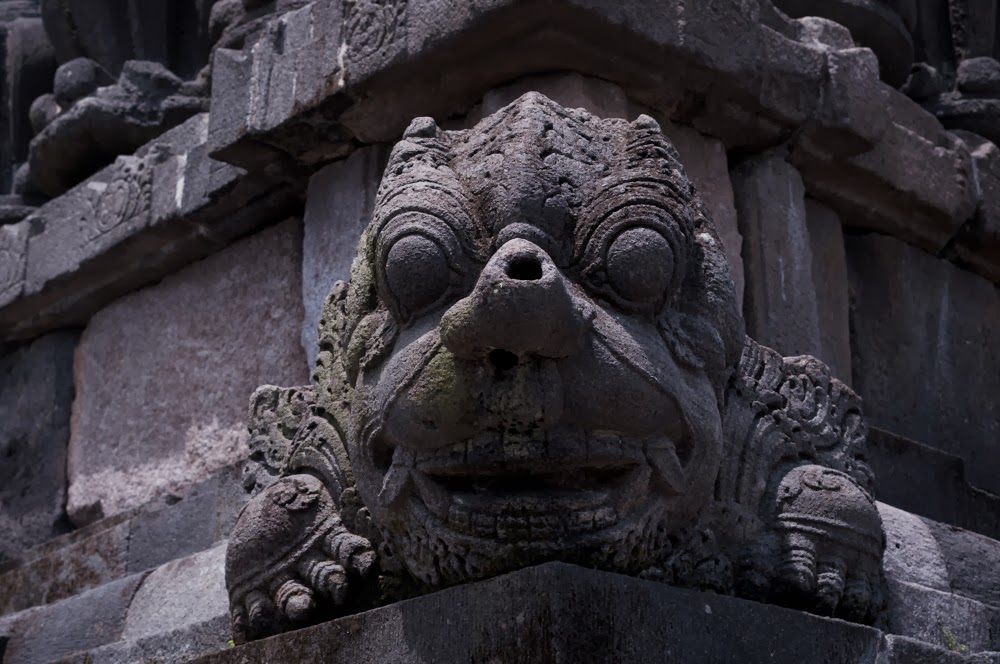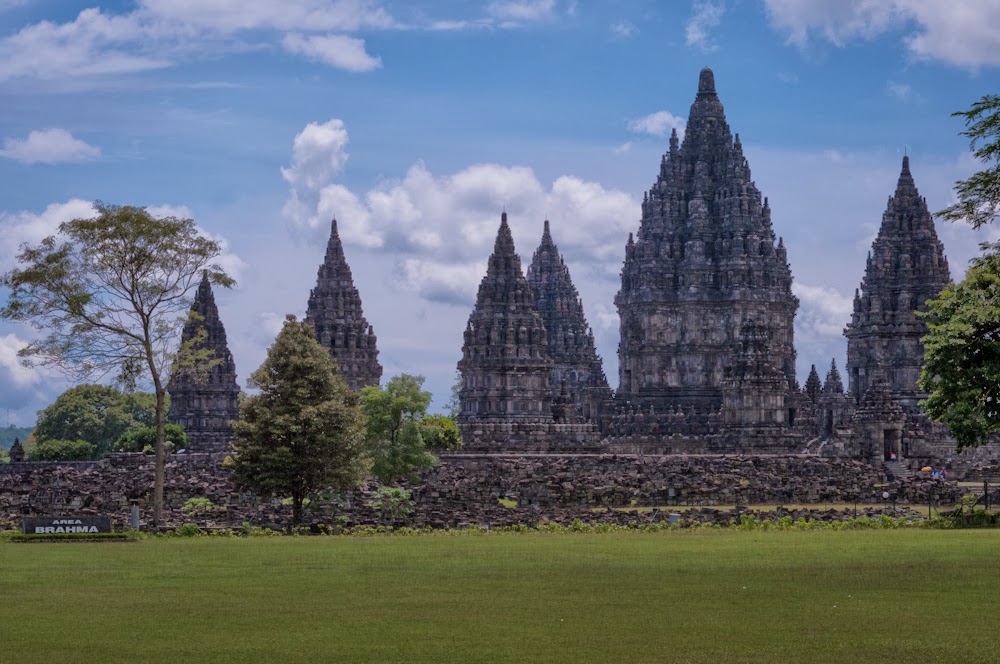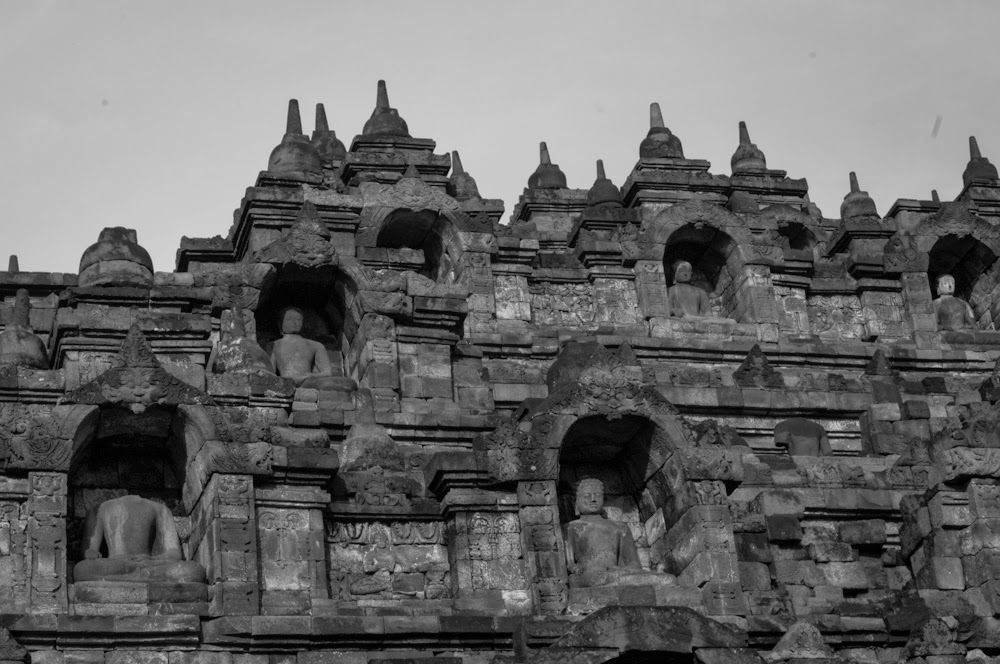2-8 Temples Part 2: Prambanan
 |
| My continuing obsession with gargoyle-things |
Prambanan is a Hindu temple built around 850 and abandoned beginning around 950. The temple complex was originally named Shiva-grha or Shiva-laya in homage to Shiva. It likely got the name Prambanan from the nearby village, though there are conflicting opinions on that. The temple was built by Rakai Pikaton of the Hindu Sanjaya Dynasty probably to show that the court had changed from Buddhist to Hindu. Also, because there was a really big Buddhist temple nearby and that couldn’t go unanswered. In the 930s, the royal court moved to East Java, probably due to volcanic activity. That was the beginning of the end for the temple, until its “re-discovery” in the early 1800s.
Though the local people have always known of the temple, it wasn’t a mark on the world stage until Sir Thomas Raffles’ involvement. One of his hired surveyors found the ruins and made a report, which caused more surveyors and more reports which led to some mass looting which led to some poor archeology which led to more looting. In 1918, reconstruction began in earnest and the main temple dedicated to Shiva was restored in 1953. The restoration of the temples has continued though possible restoration is slowing down. The temple and surrounding area have been declared a UNESCO World Heritage Site and are now in use for tourism, religious practice and cultural conservation. The archaeologists are only restoring temples that have more than 75% of their original stones available. Due to the heavy looting and re-purposing of the stones in the 1600s and 1700s, many of the stones are no longer available.
 |
| The statue in one of the main temples. |
The original complex at 240 temples. The three big ones were dedicated to Shiva, Bramah and Vishnu with 3 slightly smaller temples dedicated to their mounts. An additional 10 small shrines are located on the 4 cardinal directions inside the wall. The majority of the temples (224) were placed in four concentric rings around the wall. Smart people like to debate why and what it represents. I won’t go into that for fear of the smart people.
To show respect to the temple, everyone wears a wrap skirt, much like a sarong. Because most tourists don’t have this on hand, they have bunches. As you walk through the ticket booth, they wrap a strip of fabric around your waist and tie it, mostly without speaking. If I hadn’t known ahead of time about the respect thing, it would have been a bit abrupt and abrasive. As it was, I found it funny.
The approach to the temple is startling. Though you can see the temple in the distance, it sneaks up on you when you come out of the ticket booth. Its like you were far away and by crossing into the ticket booth, you teleport much closer.
 |
| The extremely detailed carving was gorgeous and very well preserved |
There are two main areas in Prambanan. The first is the area is enclosed in a fence and holds thousands of blocks. The blocks were once a part of different temples, but the temples have fallen or been dismantled. In many cases, the foundation of the temples is still standing, but there is no information about what it once looked like. Instead, the blocks are stacked in neat piles in hopes that there can be more reconstruction in the future if new information comes to light.
The second area is the main temple. A ten foot wall surrounds it, though the ground on the inside has been raised about six feet, making the whole thing tower even further above the surrounding countryside. The ground is packed, dusty dirt that kicks up puffs with every footfall. The temple itself is actually a collection of buildings, not one large complex. The three main buildings are dedicated to Vishnu, Shiva and Brahma with smaller buildings dedicated to minor Hindu deities.
 |
| The wall marking the inner sanctum and the piles of stones where once there were temples |
Again, the carvings are spectacular. Unlike Prambanan, the carvings don’t cover every surface, just almost every surface. The carvings here seem to be meant to help the visitor read the stories on the wall as they pass through the temple. They felt more accessible to the common man. Also, they had excellent gargoyles.
In both temples, drainage was worked into the fundamental architecture. I realize that the architectural knowledge involved in creating the temples is immense, but this touch really drove it home for me. People who planned for appropriate drainage and built their statues to elegantly control water flow are people who have truly mastered the forms they are working with.
These are beautiful creations that show the master works of hundreds of craftsman. They are to be revered for their historical and cultural significance. These places show the best of humanity, the best of what people can do when we work together and create.
By the end of the day, I was in temple overload. I stopped being able to appreciate all of that. All I wanted was a nap and a plate of food.
 |
| Prambanan, as it stands now |








